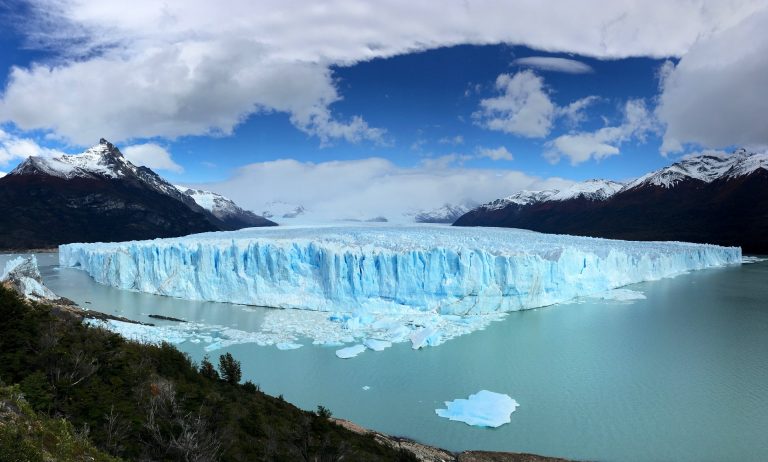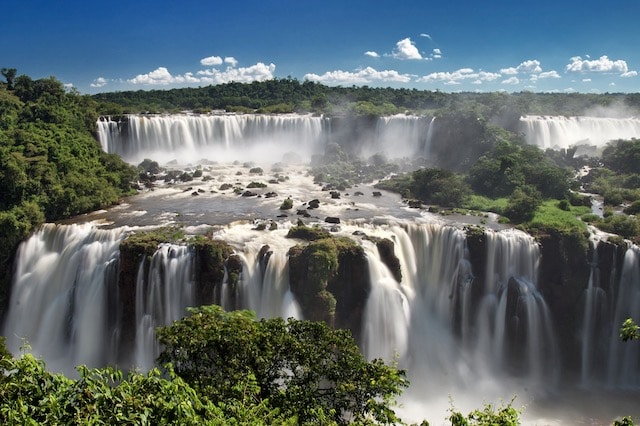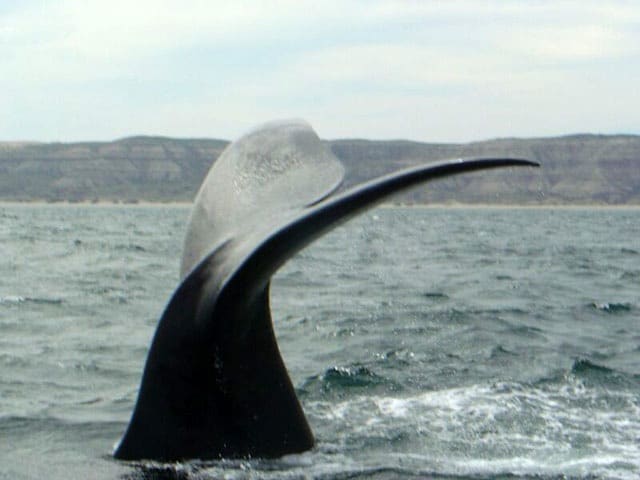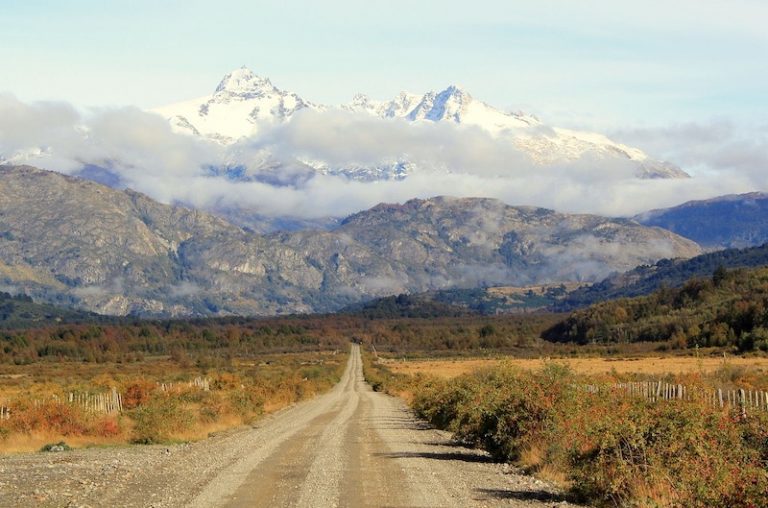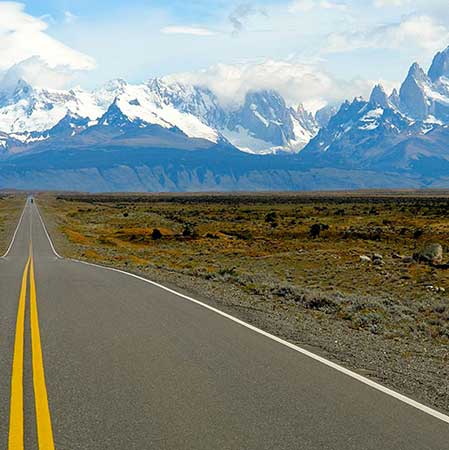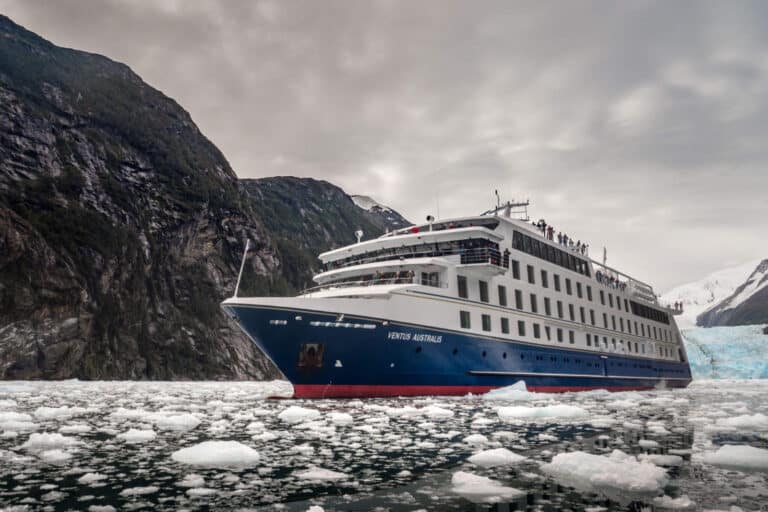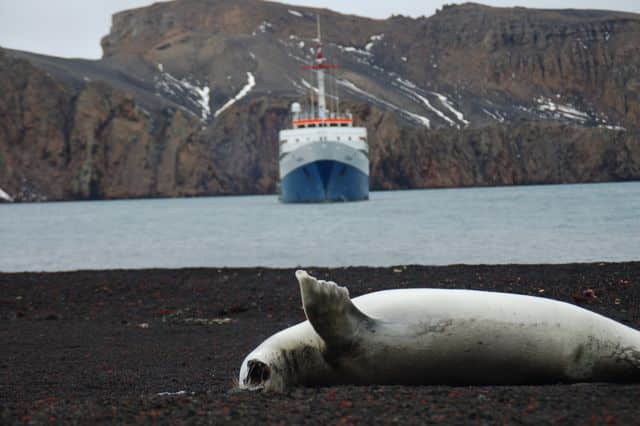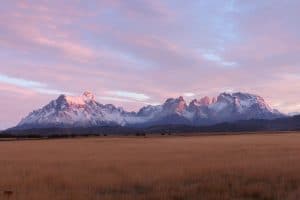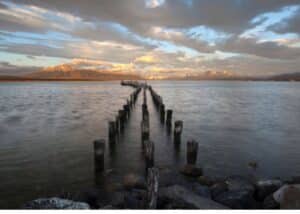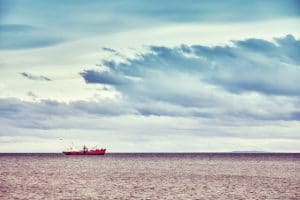Las Torres del Paine is a national park in Chilean Patagonia . It is located in the southern part of the Andes and has mountains, lakes and glaciers.
The Torres del Paine, three immense granite towers, give the park its name.
New
Other attractions include the Cuernos del Paine, the Gray Glacier, the Gray Lake, the Pehoé Lake, the Nordenskjöld Lake and the Sarmiento Lake.
- How the Torres del Paine were created
- How to get to Torres del Paine
- Fees and permits to enter Torres del Paine Park
- Torres del Paine National Park Map
- What to see in Torres del Paine National Park
- Lodging in Torres del Paine
- History of Torres del Paine Park
- Forest fires in Torres del Paine National Park
- The unique landscape of Torres del Paine
- Flora and fauna of Torres del Paine
- Weather in Torres del Paine
How the Torres del Paine were created
The towers are eroded remains of a region raised by the seismic movement of this area millions of years ago.
On the southern side of Torres del Paine, the overlying materials have been completely eroded away, leaving only several tall, rounded granite towers – these are the actual towers of the park.
On the north side, some of the original materials remain and as these have a different slope and color, they form the tips of the “horns” seen in the image above. At times in the distant past the area was extensively glaciated; some glaciers remain on the eastern side of the uplift (on the left in the image) and form icebergs that flow some distance into the large and scenic Lago Pehoé.
How to get to Torres del Paine
By plane
Torres del Paine Park cannot be reached directly by plane, but you can fly to Punta Arenas (Chile) or El Calafate (Argentina) and travel by land to Torres del Paine.
by car
Warning: The 1 closest guaranteed service station is located in Puerto Natales .
There are four main entrances (lodges) to the park.
1 Laguna Amarga – The main entrance to the park, located closer to the Las Torres complex.
2 Lake Sarmiento – The least visited entrance, located near the shore of Lake Sarmiento.
3 Laguna Azul – It is the northernmost entrance to the park, used mainly by those who rent horses for the trails located nearby.
4 Serrano – The most direct route to Puerto Natales (approximately 90 kilometers, 1.5 hours, only partially paved) and the closest to the administration building and the visitor center.
More information on how to get to Torres del Paine >
It is also possible to enter the park through Route Y-180/Laguna Verde Gate. However, the road ends here and it is only possible to enter the park on foot or on horseback. This entrance is more of an option for those re-entering the park with a paid pass, as there is no entrance fee at Laguna Verde.
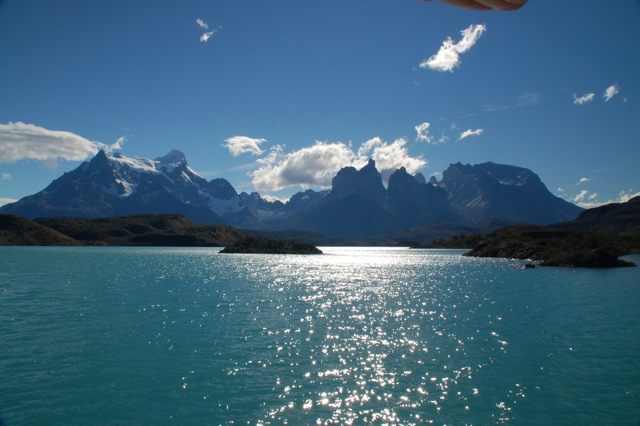
Getting to Torres del Paine by bus
Buses leave daily from Puerto Natales (two hours), the main connection with civilization. All normal buses pass through Laguna Amarga, where admission is charged and official Conaf maps are handed out, before continuing on to Pudeto, which is the departure point for the catamaran to Paine Grande. In Pudeto, those who wish to continue to the administration building/visitor center will change to a different bus, regardless of the bus company.
The following bus companies in Puerto Natales make two daily trips to the park in high season, and they all follow the same schedule. Please note that all buses leave from the Puerto Natales bus terminal.
Tickets can be purchased at the bus terminal or at the addresses listed below. Tickets may include an open return, so be careful not to drop the return ticket stub.
- Pacheco buses, Eleuterio Ramírez 224, +56 61 41480.
- Fernandez buses, Armando Sanhueza 745, +56 61 242313.
- Gómez buses, Arturo Prat 234, +56 61 415700.
- Buses María José, Av. Spain 1455, +56 61 2 410951.
- JBA Patagonia, Arturo Prat 258, +56 61 410242, [1].
In the low season (April and September) there is only one daily departure and return (7:30AM departure from Puerto Natales and 1PM return from the administration building), and public buses do not run in the low season (May -August). It is convenient to confirm with the bus companies in advance.
Excursion from Calafate to Torres del Paine
From the park there are no direct buses to El Calafate but many tour operators offer them, in particular Chalten Travel. Therefore, it is possible to go directly from El Calafate to the park and even return the same day.
Ver excursiones de Calafate a Torres del Paine >
Fees and permits to enter Torres del Paine Park
In high season (October to April) an entrance fee of 21,000 Chilean pesos is charged for foreigners and 6,000 Chilean pesos for citizens and residents.
Torres del Paine National Park Map
The state of the trails can be consulted in the daily report on the park’s official website. The main trails in the lowlands are generally open year-round.
However, the back of the Macizo Paine Circuit (between Laguna Amarga and Refugio Grey, counterclockwise) is closed in the winter (May-October) due to the absence of park rangers and the difficulty of the terrain.
Parts of the W trek (the French Valley, the Base de las Torres viewpoint, for example) are regularly closed in winter due to snow accumulation, even though there is no snow in other sectors of the park. It is recommended to check the website for the most up-to-date information.
In general, most park visitors access the main trails (which include the “W” trek and the Paine Massif Circuit) either by catamaran from Pudeto to Paine Grande or on foot/by transfer to Hotel Las Torres from the entrance of Laguna Amarga.
The Hielos Patagónicos catamaran runs between Pudeto and the Paine Grande Refuge. Round-trip tickets cost 18,000 and 28,000 Chilean pesos respectively, the transport of backpacks and luggage has an additional cost of 4,000 Chilean pesos and must not exceed 50 kilograms. From Laguna Amarga a van runs to and from Hotel Las Torres four times a day to connect Las Torres with the main bus route. The price is CLP$3,000 each way. The shuttle typically departs at 2PM for passengers to return to their buses at 2:30 to return to Puerto Natales. Backpackers can wait at the Central Shelter and get a hot lunch or relax while they wait.
The Gray II runs between Hostería Lago Gray and Refugio Gray and must be booked in advance (CLP$55,000).
What to see in Torres del Paine National Park
Although it is possible to follow the well-marked trails through the park unassisted, the experience is greatly enhanced by joining a guided tour. Your guide will point out and name the flora and fauna along the way, as well as make side detours to points of interest that the casual traveler might miss or simply be unaware of.
The biggest advantage of taking a tour is that all the equipment, such as tents, sleeping bags, mattresses, crampons for walking on the ice, and luggage transfers, are provided by the tour companies.
The longest tours within the park are generally between five and seven days long. Following the famous “W” trekking itinerary, and including a cruise on the Serrano River or along one of the fjords.
See excursions to Torres del Paine>
Depending on the tour, accommodation is provided in tents (either in paid camps with all the facilities, including hot showers, or in the free Conaf camps with pit latrines), in the park shelters mentioned above , or in remote mountain lodges or inns.
Other activities offered within the Torres del Paine Park are guided tours, fly fishing, canoeing through the fjords and canals or hiking on ice. .
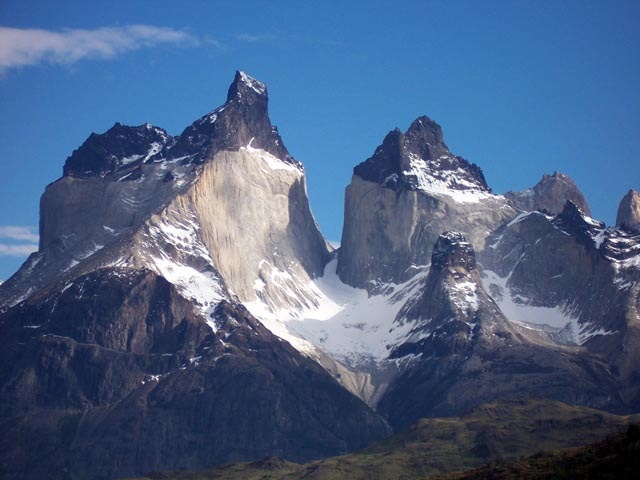
Lodging in Torres del Paine
In October 2016, the park implemented a rule that requires the reservation of accommodation in CONAF camps and shelters, both private and public. This is absolutely not required to enter the park, but the rangers will check your reservations as you pass the ranger posts between the campsites and will require a reservation.
You can make free reservations for CONAF campsites on the Official Website of Torres del Paine Park.
Lodges and hotels
There are several accommodations from the most basic to spectacular places to sleep.
Keep in mind that you must make a reservation well in advance to get a place.
Camping inside the Torres del Paine Park
There are several campsites. Camping near a shelter costs CLP$6,000 or CLP$10,000. The other CONAF campsites (called camps) are free but you need to book in advance. All camps have at least basic toilet facilities (bring your own toilet paper) and the lodges have hot showers. Travelers are theoretically restricted to camping only one night at each CONAF campsite, but this appears to be relatively undemanding.
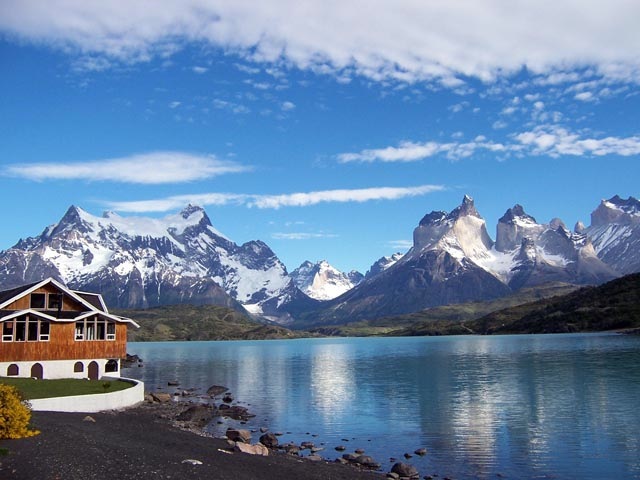
Free Campsite
Hiking and camping outside of designated areas is prohibited, and will result in immediate removal from the park if caught.
Surroundings of Torres del Paine
History of Torres del Paine Park
According to paleontological studies carried out in the area, the park was inhabited about 12,000 years ago by Tehuelche Indians.
The Tehuelche Indians, descendants of the Paleoindigenous, gave the name of Paine to the Massif, which meant “blue” in their language.
Lady Florence Dixie, in her book published in 1880, gave one of the first descriptions of the area and referred to the three towers as Cleopatra’s Needles. She and her group are sometimes credited with being the first “foreign tourists” to visit the area now called Torres del Paine National Park.
Several European scientists and explorers visited the area in the following decades, including Otto Nordenskiöld, Carl Skottsberg, and Alberto María de Agostini.
The park was established in 1959 as Lago Gray National Tourism Park and received its current name of Torres del Paine National Park in 1970.
In 1976, the British mountaineer John Gardner and two park rangers from Torres del Paine, Pepe Alarcón and Oscar Guineo, were the pioneers of the Circuit that circulates the Paine massif.
In 1977 Guido Monzino donated 12,000 hectares (30,000 acres) to the Chilean government when its final boundaries were established. The park was designated a World Biosphere Reserve by UNESCO in 1978.
Forest fires in Torres del Paine National Park
In 1985, a tourist started a fire that burned about 150 km2 of the park. The fire affected the areas to the east and south around Lake Pehoé.
In February 2005, an accidental fire started by a Czech backpacker, which lasted about ten days, destroyed 155 km2 of the park, including about 2 km² of native forest. The Czech government offered help after the fire, donating $1 million to reforestation efforts.
Between the end of December 2011 and January 2012, another fire attributed to an Israeli backpacker burned some 176 km2 of the reserve, destroying some 36 km² of native forest and affecting most of the areas around Lake Pehoé and the western areas around it. from Lake Sarmiento, but away from the Cordillera del Paine, the centerpiece of the park.
The Israeli government sent reforestation experts to the area and has pledged to donate trees to replant the affected areas.
However, recent paleoenvironmental studies carried out within the park indicate that fire has been a frequent phenomenon for at least the last 12,800 years.
The unique landscape of Torres del Paine
Next to the amazing Paine massif and its beautiful peaks, blue lakes, trails winding through emerald forests, roaring rivers to be crossed over rickety bridges, and radiant blue glaciers, not to mention the grand opening of the steppe to mountainous terrain. rugged topped by looming peaks.
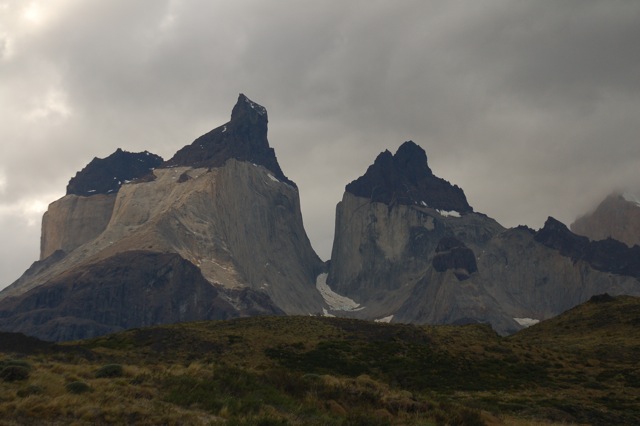
Flora and fauna of Torres del Paine
Fauna includes abundant guanacos, flamingos, pumas, rheas, gray foxes, and Andean condors.
Weather in Torres del Paine
According to the Köppen climate classification, the park is in the “cold rain temperate climate without a dry season”. The meteorological conditions of the park are variable due to the complex orography. But you have to be prepared for harsh weather. Wind and strong sun are also problems, and the weather can go through four full seasons in the course of a day, as the locals say.
temperatures
The area is characterized by cool summers, with temperatures below 16 °C (61 °F) during the warmest month (January). Winter is relatively cold, with an average high temperature in July of 5 °C (41 °F), and an average low of -3 °C (27 °F).[17] .
Precipitation
The rainiest months are March and April, with a monthly average of 80 mm of rain. This represents twice the rainfall of July-October (winter), which are the driest months. A study of the exact chemical components of precipitation in the park has been carried out.
PAINE TREKK
Book Travel Consultation
Book a 30-minute consultation with a travel expert to optimize your planned trip. I will assist you in organizing your trekk in Torres del Paine, ensuring an unforgettable adventure.
PAINE TREKK
Book Travel Consultation
Book a 30-minute consultation with a travel expert to optimize your planned trip. I will assist you in organizing your trek in Torres del Paine, ensuring an unforgettable adventure.
My organised trips to Patagonia
In the carousel below you can see already assembled itineraries for inspiration, click on the one you are interested in and ask me for a quote.
Compact trip through the southernmost Argentinean Patagonia: Ushuaia and El Calafate
Enjoy the 3 most relevant ecosystems in Argentina: The End of the World, The Glaciers and the Iguazu Falls.
Trip to Patagonia Argentina in 7 days touring the most beautiful landscapes of Patagonia Argentina (Peninsula Valdés & El Calafate)
The Carretera Austral by rental car is probably one of the most spectacular routes in Patagonia, designed to be travelled with plenty of time in your rental car.
Tour along Route 40 in Patagonia, starting on Route 3 on the Atlantic coast and continuing along Route 40 until reaching the Andes Mountains and El Calafate.
The Australis Cruises are Expedition Cruises that sail through the Strait of Magellan and the Beagle Channel, exploring one of the most beautiful and unspoiled regions of the world such as Patagonia and Tierra del Fuego.
The Antarctic Cruise aboard the MV USHUAIA offers you an incredible introduction to the 'White Continent' at a reasonable price.



